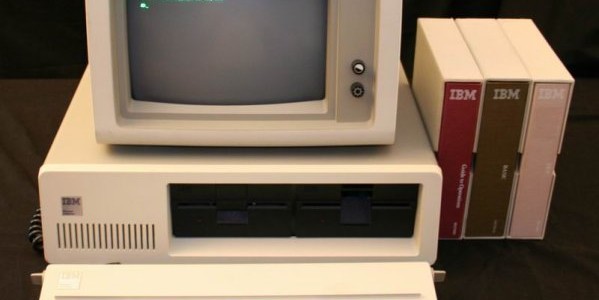Early portables
Many observers consider that the first truly portable computer was the Osborne 1. Released in 1981, it weighed a whopping 24 pounds and cost a shade under $1,800. It had a five inch mono screen, a modem port and two 5 ¼ inch floppy drives. Sadly, the company didn’t last long. Apple released its first portable computer, the Macintosh Portable, in 1989. This was another weighty monster of some 17 pounds. Development accelerated after that though and in 1991 came the new Apple Powerboooks and a host of PC based machines that we would recognise today as true laptops.
True Laptops
IBM’s Thinkpad came along in 1992 and thereafter the pace of change increased, with machines getting more powerful, lighter and adding colour displays. The laptop seemed to epitomise a new business environment of telecommuters and more flexible working patterns. There was undoubtedly a sense of glamour that went with the machines. If you had a laptop, you were one of those new, independent and highly mobile professionals. You had arrived. Laptops had arrived too and in 2008 they outsold desktop models for the first time.
Netbooks
The form factor remained pretty constant until 2007 when the netbook arrived. Various manufacturers noted that most customers used only a fraction of the computing power and features of a laptop, so they minimised the size and weight, cut out technology that was seen as superfluous, such as an optical drive and the netbook was born. Weights were as low as perhaps two pounds and these ultra-compact machines were perfect for surfing the web, sending emails and doing light office work.
The netbook was, however, short-lived. As they grew more popular, they got bigger and added more features. At the same time, technology evolved and notebooks got smaller and lighter. Soon, there was no discernible difference between the two and by 2009 CNET announced that they saw no separate netbook niche. For all intents and purposes, the netbook was gone.
Tablets
There was still an appetite for a simplified computing device that was light, portable and simple to operate. Smartphones had been an outstanding success and changed the way people thought about computing. The app had arrived and people readily adopted this new, simplified way of interacting with software. By 2010, the tablet had truly arrived, providing affordable and convenient computing, ideal for surfing the web and viewing content such as video. Today, more than 30% of Internet users have a tablet device.
Phones
Smartphones did arrive before the tablet computer, so they are not necessarily the latest in portable computing but they may just be the defining device. Smartphones took mobile computing away from the geeks and the corporate users and placed it firmly in the hands of the mainstream public. Now everyone is using apps and browsing the web on their phone. It is perhaps ironic that the most popular type of mobile computing came from a completely different industry.
Visit Portable Universe for an unrivalled selection of laptops and mobile computing solutions





